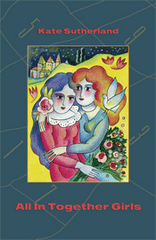But however legitimate a concern for cultural nationalists, for the literary historian, national divisions hide more than they reveal. A national focus was essential for recognizing Canadian literature's arrival, and it remains essential for periodically reaffirming its health, but it cannot explain the actual circumstances of much of that literature's production. No national model can account for [Bliss] Carman writing the first of his Vagabondia poems after reading an English law book in a New York library, or for Palmer Cox creating his Brownies by combining the Scottish legends he heard as a child in Quebec with the skills he acquired as a cartoonist in California, or for Ernest Thompson Seton submitting his career-launching story about a New Mexico wolf to a New York magazine because he was urged to do so by a Toronto economist⎯or indeed for the circumstances that produced any literary work, in any literature.
Late 19th century focus notwithstanding, this still resonates today. For a bit more on Mount's book, see my post below.

